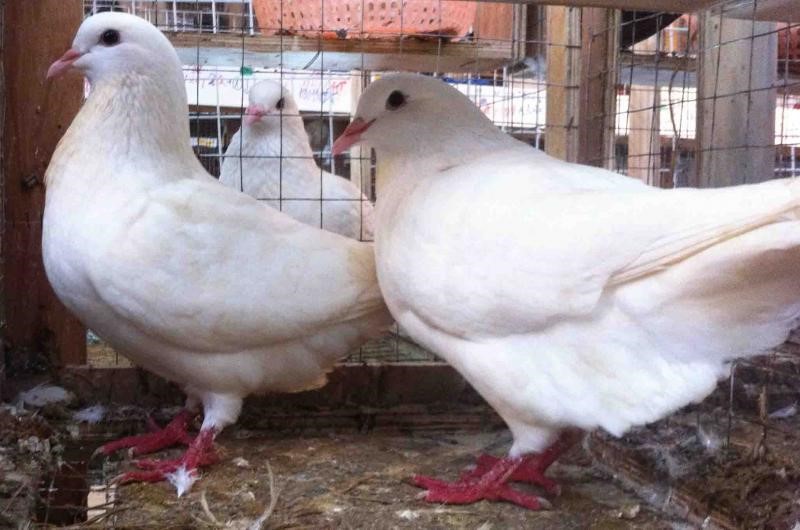Pigeon farming for meat is becoming a potential direction for many farmers. To raise pigeons effectively and sustainably, farmers need to apply the right techniques from breed selection to care and disease prevention.
Commercial pigeon farming is increasingly chosen by households and farms due to its low investment cost, quick turnover, and stable market demand. However, to achieve success, farmers need to master proper care techniques, breed selection, disease prevention, and efficient management.
1. BREED SELECTION
Breed selection is a key factor determining productivity and economic efficiency. Currently, the most commonly raised meat pigeon breeds include:
– French and American pigeons: Fast-growing, high meat yield, easy to raise.
– Crossbred local pigeons: Strong disease resistance, suitable for small-scale household farming.
– Pure local breeds: Less disease-prone but lower productivity and body weight.
Note: Select healthy birds with smooth feathers, no deformities, bright eyes, and active movement. Avoid choosing thin, weak birds with ruffled feathers or wet droppings.

2. HOUSING AND REARING ENVIRONMENT
Housing:
– Well-ventilated, clean, dry, free from drafts, and with access to natural light.
– Approximately 2 to 2.5 meters in height; use heat-resistant materials for roofing.
Maintain an appropriate stocking density:
– Overcrowding should be avoided, as it can cause stress and increase disease risk.
3. NUTRITIONAL REGIME
Pigeons primarily eat grains such as corn, rice, paddy, beans, and millet. However, for high-yield commercial farming, industrial feed should be supplemented.
Always provide clean drinking water. Clean and replace water daily. Add vitamins and minerals to drinking water. Products such as Vitol 140 Oral help improve feather gloss and body condition. During hot weather, use electrolyte products like Coolvit to restore electrolyte balance and reduce heat stress. Add probiotics such as Haspro to improve digestion and intestinal health.

4. BREEDING AND YOUNG PIGEON CARE
Each clutch usually has 2 eggs, laid by the female pigeon with one-day intervals.
The chicks hatch after around 18 days and are fed “crop milk” by their parents for the first 7–10 days. During this stage, ensure the parent pigeons receive nutrient-rich feed to adequately nourish the chicks.
At 3 weeks, separate the squabs for commercial rearing. Feed with crushed grains or specialized pigeon feed. Supplement with probiotics to stabilize gut microbiota and prevent digestive disorders. Use Glucan C to enhance immunity. After 25–30 days, pigeons reach a body weight of 400–500g, suitable for market sale.

5. DISEASE PREVENTION AND TREATMENT
Although pigeons are relatively easy to raise, they are sensitive to environmental and nutritional changes. Without proper hygiene and immunity enhancement, they are prone to disease.
Regular cleaning and disinfection of the loft, at least once a week.
Supplement with probiotics, electrolytes, and vitamin C to support gut health and immune system, especially: Haspro: Restores gut flora after antibiotic use. Coolvit: Balances electrolytes, boosts immunity, especially post-vaccination or during harsh weather.
Essential to vaccinate pigeons against Newcastle disease and pigeon pox. Perform routine deworming of breeding pigeons every 3 to 6 months, depending on farm conditions.
Regularly check for signs of illness to ensure timely isolation and treatment.
With appropriate technical processes and proper care, the commercial pigeon farming model not only brings high economic efficiency but also contributes to diversifying income sources in livestock farming. Farmers need to maintain clean barns, supplement adequate nutrition and proactively prevent diseases to ensure healthy flocks of birds and stable development.
